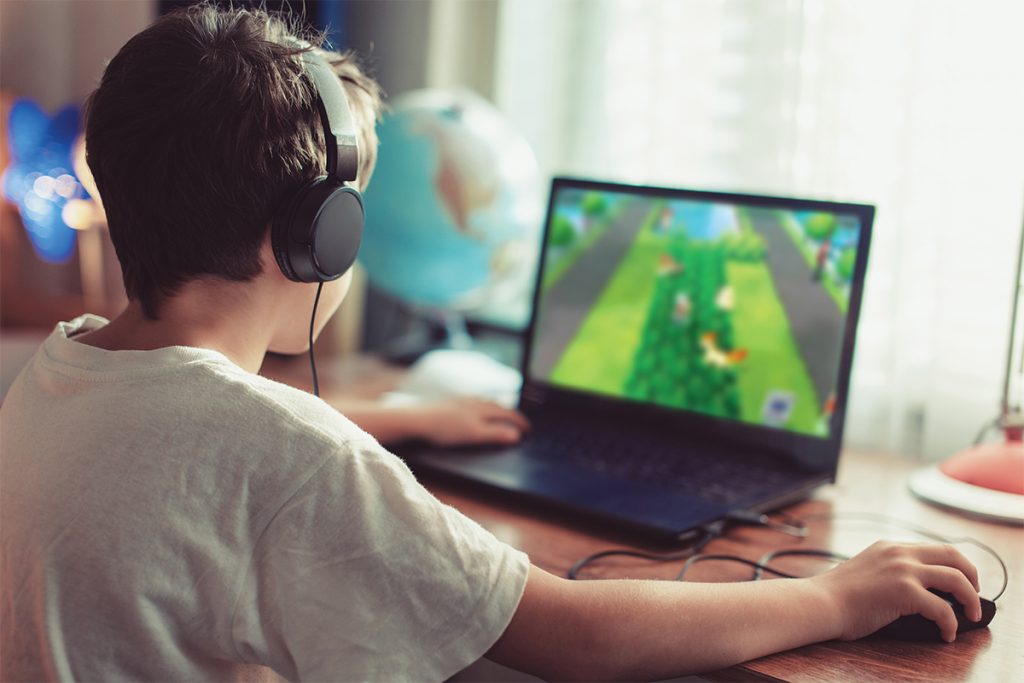Amblyopia: a binocular disorder
Binocular treatment approach may improve outcomes in amblyopic children. Roibeard Ó hÉineacháin reports

Roibeard O’hEineachain
Published: Monday, February 1, 2021
 Computer games and other treatments employing a binocular approach may provide better outcomes than patching in terms of visual acuity of the affected eye, while also mildly enhancing stereoacuity and reducing interocular suppression in amblyopia patients, Krista Kelly PhD told the 2020 WSPOS Virtual Meeting.
“Normal visual development requires equal input from the two eyes so connections can be formed that combine this information in the brain; the key is that both eyes must work together during development,” said Dr Kelly, Retina Foundation of the Southwest, Dallas, Texas.
She noted that amblyopia has traditionally been treated as a monocular disorder. She pointed out, however, that while patching is effective, 40% of patients who undergo the treatment fail to achieve normal visual acuity and 19-to-50% of those who do will regress. Normal binocularity and stereoacuity is rarely restored.
Contrast re-balancing treatments
Research has shown that decreasing fellow-eye contrast vision reduces suppression of the amblyopic eye, suggesting that amblyopic patients have a structurally intact binocular visual system. Based on that research, Dr Kelly and her associates have been investigating amblyopia treatments that rebalances the contrast between the two eyes.
She highlighted a randomised study her team conducted that compared outcomes between patching and the use of a videogame called Dig Rush, wherein anaglyph glasses provide high-contrast video to the amblyopic eye and low-contrast video to the fellow eye. It showed that at two weeks, children in the Dig Rush group had 1.5 lines improvement in their amblyopic eye, which was double that seen with patching at 0.7 lines. In fact, after four weeks, almost 40% in the Dig Rush group achieved normal vision.
More recently, studies using his approach have also shown mild improvements in stereoacuity and reductions in interocular suppression, showing that contrast rebalancing can improve binocularity typically impaired in amblyopia.
Multiple randomised clinical trials have also shown significant improvements in visual acuity from baseline using this kind of treatment. However, unlike the Retina Foundation’s study, the studies did not show superiority of binocular treatment over patching. The failure to show a superior outcome in those studies may have been due to the older age of patients, intractable amblyopia after years of patching treatment and a higher proportion of patients with strabismus.
Meanwhile, research into binocular approaches in treating amblyopia is continuing at centres around the world, using virtual reality, iPads and other tablets with games and movies that manipulate contrast and also use perceptual learning and three-dimensional imaging to address stereoacuity deficits.
Krista Kelly: kkelly@rfsw.org
Computer games and other treatments employing a binocular approach may provide better outcomes than patching in terms of visual acuity of the affected eye, while also mildly enhancing stereoacuity and reducing interocular suppression in amblyopia patients, Krista Kelly PhD told the 2020 WSPOS Virtual Meeting.
“Normal visual development requires equal input from the two eyes so connections can be formed that combine this information in the brain; the key is that both eyes must work together during development,” said Dr Kelly, Retina Foundation of the Southwest, Dallas, Texas.
She noted that amblyopia has traditionally been treated as a monocular disorder. She pointed out, however, that while patching is effective, 40% of patients who undergo the treatment fail to achieve normal visual acuity and 19-to-50% of those who do will regress. Normal binocularity and stereoacuity is rarely restored.
Contrast re-balancing treatments
Research has shown that decreasing fellow-eye contrast vision reduces suppression of the amblyopic eye, suggesting that amblyopic patients have a structurally intact binocular visual system. Based on that research, Dr Kelly and her associates have been investigating amblyopia treatments that rebalances the contrast between the two eyes.
She highlighted a randomised study her team conducted that compared outcomes between patching and the use of a videogame called Dig Rush, wherein anaglyph glasses provide high-contrast video to the amblyopic eye and low-contrast video to the fellow eye. It showed that at two weeks, children in the Dig Rush group had 1.5 lines improvement in their amblyopic eye, which was double that seen with patching at 0.7 lines. In fact, after four weeks, almost 40% in the Dig Rush group achieved normal vision.
More recently, studies using his approach have also shown mild improvements in stereoacuity and reductions in interocular suppression, showing that contrast rebalancing can improve binocularity typically impaired in amblyopia.
Multiple randomised clinical trials have also shown significant improvements in visual acuity from baseline using this kind of treatment. However, unlike the Retina Foundation’s study, the studies did not show superiority of binocular treatment over patching. The failure to show a superior outcome in those studies may have been due to the older age of patients, intractable amblyopia after years of patching treatment and a higher proportion of patients with strabismus.
Meanwhile, research into binocular approaches in treating amblyopia is continuing at centres around the world, using virtual reality, iPads and other tablets with games and movies that manipulate contrast and also use perceptual learning and three-dimensional imaging to address stereoacuity deficits.
Krista Kelly: kkelly@rfsw.org